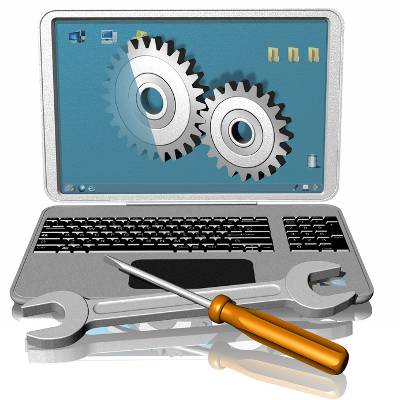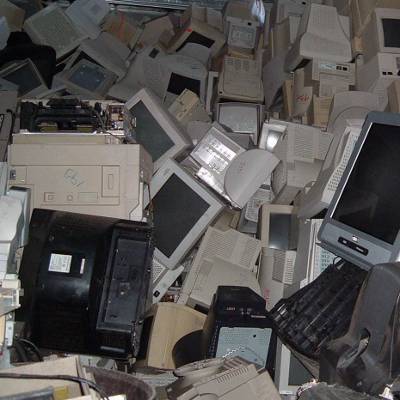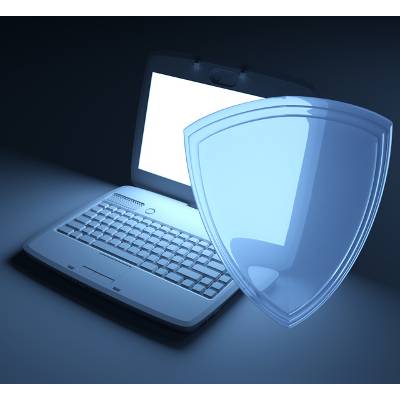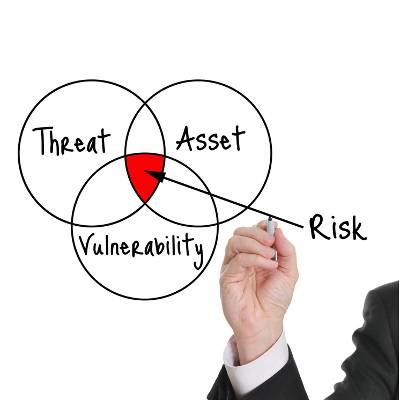SMART Blog
 Doing business in today's world is dependant on mobility, and if you aren't ready to shift toward this new technology trend, you should seriously reconsider. A lot of the time, businesses will allow their employees to bring in their own mobile devices for use in the workplace. This trend is called a Bring Your Own Device (BYOD).
Doing business in today's world is dependant on mobility, and if you aren't ready to shift toward this new technology trend, you should seriously reconsider. A lot of the time, businesses will allow their employees to bring in their own mobile devices for use in the workplace. This trend is called a Bring Your Own Device (BYOD).
 Everything changes in due time. Computers grow less secure, malware grows more sophisticated, and hackers' methods change. According to Processor magazine, 80 to 90 percent of attacks are targeted at devices rather than networks and servers. Just like the weakest link in a fence, all it takes is one weak point for a hacker to take down your entire network.
Everything changes in due time. Computers grow less secure, malware grows more sophisticated, and hackers' methods change. According to Processor magazine, 80 to 90 percent of attacks are targeted at devices rather than networks and servers. Just like the weakest link in a fence, all it takes is one weak point for a hacker to take down your entire network.
 "Quick, to the emergency room!" These are dreaded words that nobody wants to hear. An emergency like this implies a life or death scenario, and it gets everybody worked up into a frenzy. After arriving to the ER and getting a doctor's diagnosis, how quickly do people's attitudes change when the emergency turns out to be false?
"Quick, to the emergency room!" These are dreaded words that nobody wants to hear. An emergency like this implies a life or death scenario, and it gets everybody worked up into a frenzy. After arriving to the ER and getting a doctor's diagnosis, how quickly do people's attitudes change when the emergency turns out to be false?
 It's the nature of technology to take a while for the market to fully appreciate it. After it's released, there's an implementation phase where the benefits are weighed against the risks. This phase is usually a slow one, but if the technology is good, then its acceptance will be widespread and businesses will have to give excuses on why they're not using it.
It's the nature of technology to take a while for the market to fully appreciate it. After it's released, there's an implementation phase where the benefits are weighed against the risks. This phase is usually a slow one, but if the technology is good, then its acceptance will be widespread and businesses will have to give excuses on why they're not using it.
 As a responsible business owner, you know that using the latest technology and running updated software is a key component to your company's network security. However, your employees may not value the latest tech like you do, which could result in a major data breach, despite your best efforts to keep your company current.
As a responsible business owner, you know that using the latest technology and running updated software is a key component to your company's network security. However, your employees may not value the latest tech like you do, which could result in a major data breach, despite your best efforts to keep your company current.
 Giving your team the opportunity to work from home can be tricky business. Who knows how distracted they can get without you around to keep them on track? Still, working remotely has its advantages, for both you and your employees - even if you feel disconnected from them.
Giving your team the opportunity to work from home can be tricky business. Who knows how distracted they can get without you around to keep them on track? Still, working remotely has its advantages, for both you and your employees - even if you feel disconnected from them.
It doesn't have to be that way, though. By taking certain steps and measures, you'll feel like your out-of-office team is right in the office with you. Here are a couple of tricks you can use to bring your remote employees into your office... remotely!
 There are some good things about the past. Events that happened then have led you to where you are now - you're an owner of a thriving business, and you can remember being a startup like it was yesterday. But, does your technology also remember those halcyon days? If so, you might be due for a much-needed upgrade.
There are some good things about the past. Events that happened then have led you to where you are now - you're an owner of a thriving business, and you can remember being a startup like it was yesterday. But, does your technology also remember those halcyon days? If so, you might be due for a much-needed upgrade.
 Every business operates on a budget and every employee has a responsibility to make sure that their actions keep their company within said budget. Budgets don't like surprises, and employees don't like a busted budget being traced back to them. This reality can make things messy and expensive when it comes to doing IT the break-fix way.
Every business operates on a budget and every employee has a responsibility to make sure that their actions keep their company within said budget. Budgets don't like surprises, and employees don't like a busted budget being traced back to them. This reality can make things messy and expensive when it comes to doing IT the break-fix way.
 "Free WiFi Zone." You see the sign advertised in the window of a new coffee shop. You've got a lot of work to do and you want a change of scenery, so you pack up your laptop and pay them a visit. The coffee is great, but the WiFi service is lousy. In fact, the spotty WiFi service is so poor that you get frustrated and leave, vowing to never shop there again.
"Free WiFi Zone." You see the sign advertised in the window of a new coffee shop. You've got a lot of work to do and you want a change of scenery, so you pack up your laptop and pay them a visit. The coffee is great, but the WiFi service is lousy. In fact, the spotty WiFi service is so poor that you get frustrated and leave, vowing to never shop there again.
 We talk a lot about viruses or holes in supposedly sound security structures, but today it seems as if that's all there is to talk about. It's all about the latest vulnerability, or a hacking attack that left millions of people with compromised passwords. People always concentrate on the negative aspects of things without looking at the positives.
We talk a lot about viruses or holes in supposedly sound security structures, but today it seems as if that's all there is to talk about. It's all about the latest vulnerability, or a hacking attack that left millions of people with compromised passwords. People always concentrate on the negative aspects of things without looking at the positives.
 Who's in charge of making the decisions in your business concerning technology? Ideally, you want an internal IT manager or a CIO with IT experience calling the tech shots. However, many businesses don't have this luxury. According to a CompTIA survey from last November, 48 percent of businesses have managers making decisions about technology implementation that don't have IT experience.
Who's in charge of making the decisions in your business concerning technology? Ideally, you want an internal IT manager or a CIO with IT experience calling the tech shots. However, many businesses don't have this luxury. According to a CompTIA survey from last November, 48 percent of businesses have managers making decisions about technology implementation that don't have IT experience.
 Remember when you upgraded to a flat screen TV or monitor just a few years ago? You may have marveled at the increased picture quality and celebrated getting rid of your old and bulky equipment, but do you know what happened to the old CRT monitor after you threw it out? Unfortunately, the answer doesn't bode well for the environment.
Remember when you upgraded to a flat screen TV or monitor just a few years ago? You may have marveled at the increased picture quality and celebrated getting rid of your old and bulky equipment, but do you know what happened to the old CRT monitor after you threw it out? Unfortunately, the answer doesn't bode well for the environment.
 On May 7, 2014, the U.S. Securities and Exchange Commission (SEC) released a news alert declaring Bitcoin, and all other virtual currencies insecure and unsafe. Due to a rise in Bitcoin popularity, many investors and business owners like to use it for worldwide transactions. But, how safe is it, and how likely are you to run into a Bitcoin fraud scheme?
On May 7, 2014, the U.S. Securities and Exchange Commission (SEC) released a news alert declaring Bitcoin, and all other virtual currencies insecure and unsafe. Due to a rise in Bitcoin popularity, many investors and business owners like to use it for worldwide transactions. But, how safe is it, and how likely are you to run into a Bitcoin fraud scheme?
 GameOver Zeus, a member of the Zeus family of malware, has been discovered and disrupted by the Department of Homeland Security, Federal Bureau of Investigation, and Department of Justice. But, this is only a temporary respite from the danger the malware poses - in two weeks, the threat will be back, and very much alive.
GameOver Zeus, a member of the Zeus family of malware, has been discovered and disrupted by the Department of Homeland Security, Federal Bureau of Investigation, and Department of Justice. But, this is only a temporary respite from the danger the malware poses - in two weeks, the threat will be back, and very much alive.
 Take a moment to consider your answer to this question, "What would you do if all of your business's data was somehow lost overnight?" How would you react, and what would you do about it? Your data is valuable, so much in fact that your business would be lost without it, and likely wouldn't be able to run properly.
Take a moment to consider your answer to this question, "What would you do if all of your business's data was somehow lost overnight?" How would you react, and what would you do about it? Your data is valuable, so much in fact that your business would be lost without it, and likely wouldn't be able to run properly.








